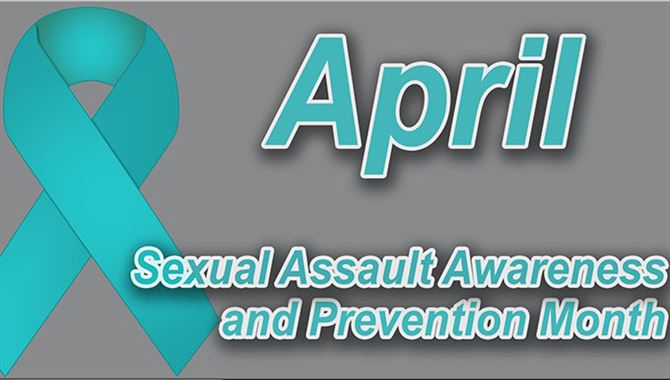News
April is Sexual Assault Awareness Month, so here are some things to be aware of according to statistics shared by the Rape, Abuse and Incest National Network:
-
Every 98 seconds an American is sexually assaulted
- Male college-aged students (18-24) are 78% more likely than non-students of the same age to be a victim of rape or sexual assault.
- Female college-aged students (18-24) are 20% less likely than non-students of the same age to be a victim of rape or sexual assault.
- Only 20% of female student victims, age 18-24, report to law enforcement.
The good news is North Idaho College already knows and has taken several courses of action to prevent and treat sexual assault on campus. NIC has joined with other colleges to head down the path toward a sexual assault-free campus by 1) establishing a Title IX officer, 2) implementing Green Dot, a bystander intervention program and 3) collaborating with Safe Passage, a confidential counseling service for sexual assault survivors.
Amanda Krier, the Sexual Assault Program Coordinator at Safe Passage, said that she thinks part of the reason sexual assault on campus is so prevalent because for many students, it is their first time away from home and they are learning to do things on their own and trying new experiences.
“We have first-time drinking, first-time sexual experiences or they want to see what’s out there,” she said. “I think when we combine all that, there’s a higher prevalence of sexual violence on campuses.”
Between the prevalence and students’ hesitancy to report sexual violence, with about two out of three assaults going unreported, college’s are now required to have an extra safeguard established: Title IX. NIC’s Title IX Coordinator is currently Alex Harris.
Title IX holds federally funded schools responsible for responding to and remedying any hostile learning environment. If they do not properly comply, the school would be in danger of losing it’s federal funding.
Title IX is part of the Educational Amendments of 1972, which states the following:
“No person in the United States shall, on the basis of sex, be excluded from participation in, be denied the benefits of, or be subjected to discrimination under any education program or activity receiving federal financial assistance.”
Harris said that because of Title IX, the college has the responsibility to investigate any incidences, whether they are reported to law enforcement or not.
“If they are reported, we still do our own investigation; if they aren’t, then we do,” he said. “Of course, we encourage every victim to report to law enforcement, but ultimately it’s whether they want to or not.”
To be in full compliance with Title IX, the college must have a designated Title IX officer, all faculty must be mandated reporters who are obligated to report to the Title IX officer if they are told about any instance of discrimination or violence, and an investigation must take place.
“I do what we call a small-eye investigation, where we look into the situation, initially, and see if there’s a possible violation of our [Title IX]policy,” Harris said. “And if it doesn’t rise to that level, then we try to fix the situation for the people involved. Or I go into a full investigation.”
A full investigation includes a report and findings if someone is found in violation of the policy, which could be anything from sexual harassment, sexual discrimination, sexual assault or rape. Then the college has to impose sanctions, set up remedies to prevent it from happening again, which could include no contact orders, expulsion or termination.
What Harris said he wants students to know about Title IX is that though it is required by law, that is not simply the only reason the college has it in place.
“It requires us to do things, but what it really does is it requires us to do what’s right,” he said. “Title IX is a good thing. It’s good guidance. Sometimes it’s cumbersome with the rules and different ways that we have to do things, but ultimately, it’s a road map for reducing sexual violence on campuses.”
Title IX is not the only road on the map for reducing sexual violence on campus. NIC also works closely with Safe Passage, a violence prevention center.
Safe Passage works at providing multiple resources especially for the dorms since not all survivors choose to report to police. By providing resources, Safe Passage allows for survivors to find a way to reach out for help.
They also train the residential assistants and dorm manager and offer their services 24/7 to the dorms or hospital if necessary. Krier said that they also collaborate with the Title IX coordinator and school resource officer so that they may offer Safe Passage’s services in any event of sexual violence that they respond to.
Whether students choose to report or not, Safe Passage makes sure that they get the help they need.
“Our judicial system is not necessarily set up in the greatest way to support victims, especially of sexual violence, because normally it occurs in a private area where there aren’t witnesses,” Harris said. “And so the continual failure of the judicial system to be able to judicate those cases quelled peoples reporting. Plus they don’t want to go to the hospital to get a rape kit, they don’t want to be interviewed by a detective over and over again, they don’t want to go on the stand and be cross-examined and all these painful things that bring it up again.”
Krier said that without the proper support or enough information about what is going on, a lot of survivors don’t like to report because they know it’s a tough process.
“We know that about 5 percent of rapists are actually serving time in jail,” she said. “So that’s hard too. It’s a hard crime to prove and it’s a hard crime to go through the law enforcement and judicial system.”
But Krier said that the perpetrators are usually repetitive. Then if people are reporting, even if the perpetrator does not immediately serve time, the evidence against him or her will begin to build so that he or she may be eventually caught.
Some survivors find healing in the pursuit of justice and apprehending the perpetrator, while others find healing through other facets. The healing process can involve finding justice, taking care of physical and mental health, supporting causes and raising awareness and building a strong support group with friends and family. There is no cookie-cutter healing process. It is different for each individual.
“It can impact survivors for as long as it takes,” Krier said. “And there’s no right or wrong way to react to it. There’s no right or wrong way to heal from it.”
She said that healing is a long process and different on a person-by-person case.
“The worst thing that they can do is not look for some sort of help,” she said. “Some people do want to just handle it alone. And that’s okay. I think eventually, at their own time, they reach out for some sort of assistance from anybody.”
That “anybody” doesn’t need to be a sexual-assault expert: it could be students. They can do this by becoming educated in social cues to look out for, knowledge of resources and utilizing their peer influence to change cultural standards.
The program NIC has to help students put an end to violence of all types is Green Dot, which applies bystander intervention to prevent violence.
“Bystander intervention is just getting in to stop a high-risk situation before it can even occur,” said Lynn Covey, Green Dot coordinator and executive assistant to the Vice President of Student Services.
Covey said the program is a peer-influence based program. It uses the influence of students to create peer pressure to do what is right and create a new culture that does not tolerate violence. Those who use their influence in this positive way and prevent harm are considered “green dots.” Those who use their influence in a negative way and harm others are considered “red dots.”
The program’s effectiveness is dependent on a student’s decision whether to act or not when they spot a situation that doesn’t seem safe.
“You have two choices, you can choose to do something, or you can choose to do nothing; and it’s an active choice not to intervene,” Covey said. “You’re choosing to leave that person in harm’s way.”
Covey said students should pay attention to their gut reactions. When something seems off, Green Dot training helps students know how to recognize what could be happening and gives them the tools to know how to intervene.
“Just check-in,” she said. “It’s never going to hurt to check-in.”
Students who want to help put an end to sexual violence on campus and help those who are affected by it have many options at their disposal.
“Just knowing what’s out there and that there are people out there that want to help and want to be there, might make the process a little easier,” Krier said.
Hey! I'm Michelle, the Managing Editor for NIC's Sentinel. I love to read mysteries, write, ride horses (only the sane ones), and dance ballet. I was born in Music City, USA and have lived all across the U.S. Now I'm here, writing for the Sentinel. It's pretty cool, you should check it out!












